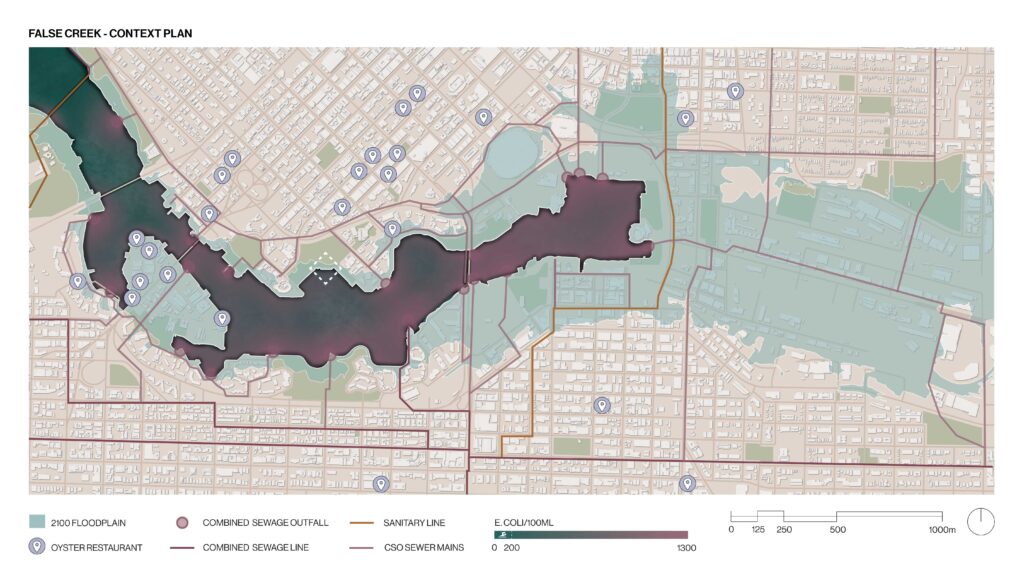
Prompted by False Creek’s poor water quality and unsuitability for swimming due to high E. coli levels, this design proposes an oyster filtration system to restore ecological health, starting at David Lam Park. The project introduces vertical oyster gardens (VOGs) suspended from an elevated boardwalk using pulley systems, allowing oysters to be raised and lowered in accordance with sea level changes. As natural filter feeders, oysters help cleanse the water by capturing bacteria while feeding.
These gardens are supported by a reestablished living edge—a shoreline planted with native, flood-resilient species that mirrors the site’s pre-industrial condition and fosters long-term oyster habitation. Replicating this system throughout False Creek has the potential to gradually improve overall water quality. Further, a picnic pavilion embedded deeper in the park encourages public interaction, completing the oyster cycle by inviting visitors to enjoy harvested oysters and recycle the shells to create new VOGs. The project ultimately envisions an adaptive, resilient waterfront, one that embraces rising sea levels while promoting ecological restoration and community engagement.